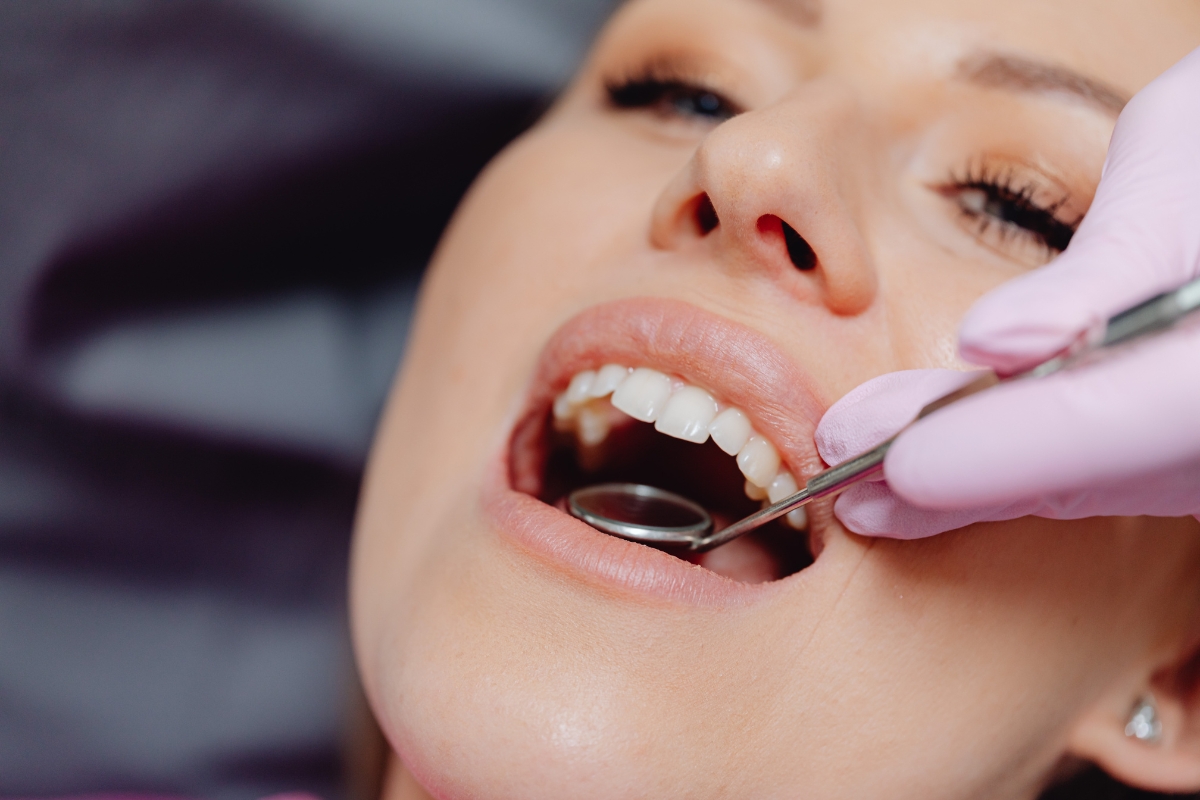$99 New Patient Special - Includes Exam, X-Ray and Basic Cleaning
Can You Get Extraction And Implant At the Same Time?

Losing a tooth can be a blow to your confidence and your ability to chew comfortably. Dental implants offer a long-lasting, natural-looking solution, but the traditional approach involves waiting months for the jawbone to heal after extraction before implant placement. This waiting period can feel like an eternity. However, there’s a potential solution: immediate dental implants. This guide dives deep into the world of same-day extraction and implant procedures, exploring their feasibility, candidacy factors, the process itself, and the pros and cons to consider.
The Allure of One-Day Wonders: Why Consider Immediate Implants?
The traditional method involves tooth extraction followed by a healing period of several months before placing the implant. This allows the jawbone to recover and ensures optimal osseointegration, the fusion process between implant and bone. However, immediate implants offer a compelling alternative:
- Reduced Procedures and Appointments: Imagine consolidating extraction and implant placement into a single visit. This saves time, minimizes the number of anesthetic injections, and reduces the overall cost (potentially fewer appointments).
- Preserved Bone Structure: When a tooth is extracted, the jawbone naturally begins to resorb (shrink) in the absence of a root. Immediate implants help maintain bone density by stimulating and supporting the bone during healing.
- Enhanced Aesthetics: Traditional approaches leave a visible gap for months. With immediate implants, a temporary crown can sometimes be placed on the same day as the extraction. This minimizes the gap and provides a more natural-looking smile while the implant integrates.
- Psychological Boost: The prospect of a gap can be a source of anxiety. Immediate implants offer a faster path to a complete smile, potentially enhancing self-confidence.
Not a Universal Solution: Understanding Candidacy for Immediate Implants
While seemingly ideal, immediate implants aren’t suitable for everyone. Here are some key factors your dentist will consider when determining your candidacy:
- Jawbone Health: Healthy and sufficient jawbone density is crucial for successful implant placement and osseointegration. If your jawbone has already undergone significant resorption due to missing teeth for a long time, an immediate implant might not be feasible.
- Oral Health: Presence of gum disease or infection can jeopardize the implant’s success. You’ll need a healthy mouth free from infection before proceeding.
- Location of the Missing Tooth: Front teeth are often more aesthetically crucial, making immediate implants more desirable. However, back teeth experience greater chewing forces. Your dentist will assess the specific location and its suitability for immediate implant placement.
- Overall Health: Certain medical conditions like uncontrolled diabetes or a weakened immune system can increase the risk of implant failure. Your dentist will consider your overall health to determine if immediate implants are safe.
The Immediate Implant Journey: A Step-by-Step Look
If you’re a good candidate for an immediate implant, here’s a general outline of the process:
- Consultation and Evaluation: This involves discussing your dental history, X-rays, and a thorough examination to assess your suitability for immediate implants.
- Extraction and Implant Placement: The dentist carefully removes the damaged tooth. If the jawbone is healthy and sufficient, the implant post is immediately inserted into the extraction socket.
- Temporary Crown Placement: In some cases, a temporary crown might be placed on the implant on the same day to maintain aesthetics while the implant osseointegrates.
- Healing and Follow-Up Visits: Healing typically takes several months. Your dentist will schedule follow-up appointments to monitor progress and ensure proper healing.
- Permanent Crown Placement: Once the implant has fully integrated with your jawbone, your dentist will replace the temporary crown with a permanent, custom-made crown that matches the color and shape of your surrounding teeth.
Weighing the Options: Pros and Cons of Immediate Implants
Like any medical procedure, immediate implants have both advantages and disadvantages:
Pros:
- Fewer procedures and appointments
- Preserved bone structure
- Improved aesthetics with a temporary crown
- Potential psychological boost
Cons:
- Not suitable for everyone (bone health, oral health factors)
- Increased risk of implant failure compared to traditional approach
- Requires skilled and experienced dentist
- Potential cost considerations (might not be covered by insurance)
Beyond the Procedure: Ensuring a Successful Implant Journey
Whether you opt for immediate or traditional implant placement, proper care is crucial for a successful outcome:
- Maintaining Excellent Oral Hygiene: Brushing twice daily and flossing regularly are essential to prevent gum disease and peri-implantitis (inflammation around the implant).
- Regular Dental Checkups: Schedule regular dental cleanings and checkups with your dentist to monitor the implant and maintain overall oral health.
- Healthy Lifestyle Habits: Smoking can hinder healing and increase the risk of implant failure. Maintaining a balanced diet rich in nutrients also supports healthy bone and overall well-being.
The Final Stitch: Making an Informed Decision
Immediate implants offer a potential pathway to a restored smile in a shorter timeframe. However, the decision involves careful consideration with your dentist. By understanding the advantages and disadvantages, candidacy factors, and the overall process, you can make an informed choice that aligns with your individual needs and health situation. Remember, open communication with your dentist is key. Discuss your expectations, concerns, and any questions you might have. Together, you can determine the most suitable approach for achieving a healthy and confident smile.
Additional Considerations:
- Cost: Immediate implants might be more expensive than the traditional approach due to the materials and skill required. Explore insurance coverage and discuss costs transparently with your dentist.
- Success Rates: While successful, immediate implants typically have a slightly higher risk of failure compared to traditional methods due to factors like limited bone availability.
- Alternatives: If immediate implants are not suitable, discuss alternative solutions with your dentist. These may include delayed implant placement after complete bone healing or alternative tooth replacement options like bridges.
Embrace a Brighter Future
Losing a tooth doesn’t have to be a permanent setback. Dental implants, whether immediate or traditional, offer a path to regaining a complete and healthy smile. By understanding the options available, working with a qualified dentist, and prioritizing good oral hygiene, you can confidently navigate the process and enjoy a smile that shines for years to come.







